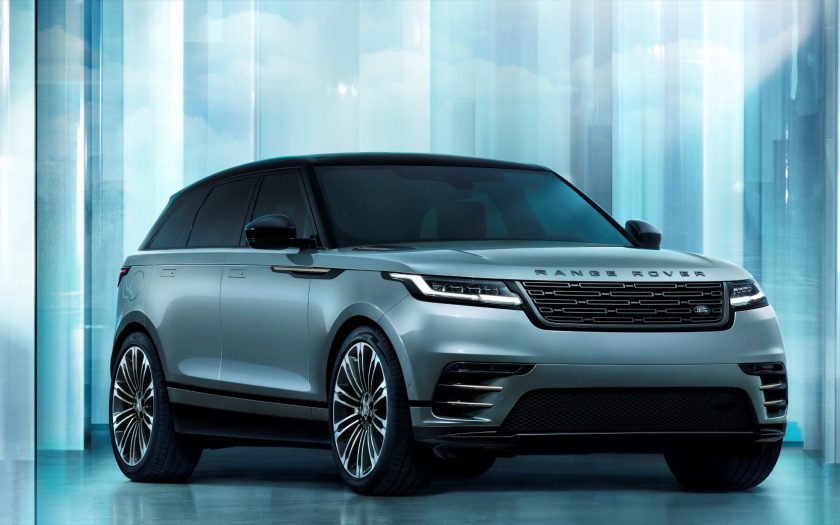Chris Riley tests the 2023 Range Rover Velar HSE P400 with pricing, specs, ride and handling, safety, verdict and everything the over-50 driver needs to know.
Summary: The Range Rover Velar is designed for posing, not punishment. It starts off expensive, and becomes even more so if you add a few options.
2023 Range Rover Velar HSE P400
Pricing: $142,000 (plus on road costs)
Options: sliding panoramic sunroof $4420, ebony suede headlining $2360, 22-inch diamond-turned alloy wheels $2080, configurable dynamics $940, privacy glass $890, interactive driver display $890, illuminated metal front tread plates $640, premium cabin lighting $540, reduced section spare wheel $530, Terrain Response 2 with Dynamic Program ($430, Argento Pinstripe veneer $220, chrome IP end caps $210, smoker’s pack $80, head-up display $2420
Warranty: Five-years/unlimited km, five years roadside assist
Safety: 5-star ANCAP (tested 2017)
Build location: United Kingdom
Engine: 3-litre turbo intercooled 6-cylinder direct injection petrol
Power: 294kW at 6500rpm
Torque: 550Nm at 5000rpm
Transmission: 8-speed sports automatic, all-wheel drive
Body: 4797mm (long); 2041mm (wide); 1678mm (high)
Weight: 2016kg
Towing capacity: 2400kg
Wheels: 21-inch alloy
Tyres: 265/45 R21
Ground clearance: 205mm, raised 251mm
Wading depth: 580mm
Fuel tank capacity: 83 litres
Official consumption: 9.1L/100km (95 premium RON petrol)
Consumption on test: 10.4L/100 (450km)
seniordriver consumption on test: not tested
[review]
Wow. It’s been more than four years since we last drove Range Rover’s Velar and not much has changed.
Named the most beautiful car in the world in 2018, the name Velar comes from a series of pre-production Range Rovers in 1969.
They’ve just updated the range with the addition of a plug-in hybrid that adds 53km of electric-only range – but other than that it all looks familiar.
In terms of size, Velar sits between Evoque and Sport, and shares a platform with cousin the Jaguar F-Pace.
Interestingly, although they all come with all-wheel drive, it lacks low range gearing, so any off-road adventures are limited.
In fact, it says something about the car, because Velar is a car that’s more about comfort and luxury than getting it dirty.
Land Rover sold 4348 vehicles here last year, 319 of them Velars.
Not many you might think, but more than the Discovery and Range Rover put together.
It’s biggest seller? The Defender (it’s new of course).
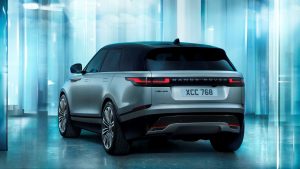
What’s it cost?
Think expensive and then some, and it is unlikely they have ever sold a Velar without options fitted.
The range kicks off with the four-cylinder R-Dynamic S P250, priced from $106,946, followed by the P250 R-Dynamic SE from $109,361. The six-cylinder P400 R-Dynamic SE is priced from $136,976 and the HSE from $149,051. The P400e R-Dynamic PHEV is from $151,256 – all of them petrol-based.
One diesel model is offered, the Edition D300 MHEV, priced from $136,426.
Our test vehicle, the HSE P400, is finished in Hakuba silver, with an interior decked out in a combination of suede and a denim-like material. The latter can also be found on the door handles.
Although priced from $149,051, a few accessories had been fitted to the car, lifting the price to more than $160,000.
They include a Sliding Panoramic Roof ($4420), Ebony Suedecloth Headlining ($2360), 22-inch Diamond Turned alloys with Satin Light Silver contrast ($2080), Configurable Dynamics ($940), Privacy glass ($890), Interactive Driver display ($890), Illuminated metal front treadplates with R-Dynamic branding ($640), Premium cabin lighting ($540), Reduced section spare wheel ($530), Terrain Response 2 with Dynamic Program ($430), Argento Pinstripe veneer ($220) and Chrome IP end caps ($210). Did I say a few? Phew!
Standard kit on the entry model includes 20-inch wheels, two-zone climate air and seats trimmed in a combination of perforated grained leather and suede, with ebony morzine headlining, perforated full leather steering wheel, 14-way power-adjust seats and a power-operated tailgate.
There’s also auto high beam, auto lights and wipers, auto dimming rear view mirror, front and rear parking sensors, LED headlights with signature DRLs and animated indicators plus traffic sign recognition and adaptive speed limiter.
By the time you get to the HSE, it’s got 21-inch wheels, matrix LED headlights, power-adjust steering column, 20-way power adjust seats that are heated and cooled, with massage and driver memory.
Infotainment comes courtesy of a 10.0-inch pivoting touchscreen and the Pivo Pro operating system, with Bluetooth, Alexa voice control, built-in navigation, AM/FM/DAB radio, wireless Apple Carplay and Android Auto, plus a 12-month pre-paid data plan.
No mention of wireless phone charging, but there’s 1 x USB-A and 1 x USB-C (charge and connect) in the first row and 2 x USB-C and a 12-volt power socket in the second row.
A 400-watt Meridian audio system with 12 speakers is standard. HSE ups this to 3D surround sound, with 750 watts and 17 speakers.
A part-analogue, part-digital instrument cluster is standard, with a central 7.0-inch info screen that cannot be configured.
The optional 12.3-inch full digital interactive display fitted to the test vehicle is an attention grabber and allows the driver to prioritise key information.
You can select a two-dial layout with an information panel in the centre, a one-dial layout flanked by dual information displays, or navigation with a full side to side map.
Five-star safety comprises six airbags, a rear-view camera, autonomous emergency braking (AEB) with pedestrian detection, lane departure warning (LDW) and speed assist systems (SAS). The safety rating is due to expire in September.
There’s also blind spot assist, rear traffic monitor, lane keep assist, traffic sign recognition and adaptive speed limiter, adaptive cruise control with steering assist, driver condition monitor and a tyre pressure monitoring system (TPMS).
Head-up display surprisingly remains a $2420 option. A 360-degree camera is optional but unavailable because of supply problems.
Velar is covered by a five-year unlimited kilometre warranty, five-year roadside assistance and five-year service plan, the latter priced at $1950 for P250, $1950 for P400e, $2250 for P400 and $2650 for D300.
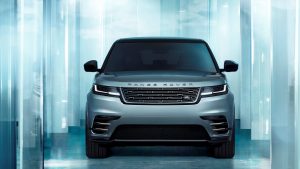
What’s it go like?
Check out the burnished copper-coloured bling.
It’s an interesting shape that presents differently from different angles.
The downside of the steeply raked windscreen and sloping roof line is that it trades off space for style.
The front and rear look the business, but in profile it’s long, skinny and torpedo-like, and not quite in proportion.
The door handles sit flush with the body and pop out when the car is unlocked, but it is the old-style system with a small, finger-operated button to initiate the process.
Notice I didn’t say ‘thumb’ because the button is located on the right-hand side of the handle – I guess it works for left-handed people.
You’d think after nigh on six years, it would be time for a makeover?
And, as we went to press, JLR revealed pics and details of a new model which made its worldwide entrance on the TikTok social media platform.
The redesign is described as minimalist, but frankly the new model looks just like the current one.
The big changes can be found in the cabin where twin touchscreens have made way for a single 11.4-inch curved screen that controls everything, in line with other family members.
Land Rover is taking orders now, but there is no indication at this stage of when those orders will be filled.
With seating for five occupants, some may find the cabin a bit claustrophobic, especially in the back.
With high sides and dash, together with narrow windows, you feel like you’re looking over the top.
Rear legroom is limited too.
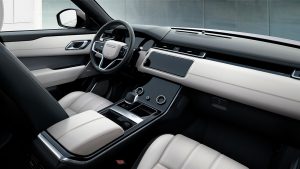
The rotary gear selector has been replaced in the latest model by the same low-profile selector that can be found in the Jaguar F-Pace that we drove recently.
The usual plethora of knobs and switches have been absorbed by the seriously impressive centre console with its two double-decker touchscreens.
The system is generally easy to use. The top screen controls such items as audio, phone and navigation, while the bottom screen adjusts functions like the air suspension and off-road modes.
We spent a good five minutes trying to figure out how to switch from miles to kilometres for navigation.
In the end, we gave up, just like the last person obviously did.
Our test vehicle was fitted with a fully digital instrument cluster that can be configured the way you like it – two dials, a single dial or wall to wall navigation.
The P400’s 3.0-litre turbocharged straight-six engine, together with a mild hybrid battery/electric motor generates 294kW of power at 5500 revs and 550Nm of torque between 2000 and 5000 revs.
Drive is to all four wheels through a conventional eight-speed auto, with satin chrome gearshift paddles, but it lacks low range gearing.
P400 dispatches the dash from 0-100km/h in a rapid 5.5 seconds and has a top speed of 250km/h.
It features an electric supercharger supported by a twin scroll turbocharger and Continuous Variable Valve Lift (CVVL).
Air suspension is standard along with Adaptive Dynamics damping technology.
Ground clearance is normally 205mm, but pumping it up for a bit of farm action takes that figure to 251mm and it is able to safely tackle water up to 580mm in depth.
We’ve never been huge fans of air suspension which has been a Range Rover signature for as long as we can remember.
It irons out the bumps okay and is good for extra clearance off-road, but it makes for a twitchy ride around town.
Together with a jerky throttle and brakes, it doesn’t exactly provide the basis for a relaxed drive experience – with the exception, that is, of the motorway.
Fuel consumption from the 82-litre tank is a claimed 8.7L/100km, using premium unleaded petrol.
We were getting 10.4L/100km after close to 450km which is too much in this day and age.
Tow capacity in case you’re wondering is 2400kg with trailer brakes.
For the smokers out there, the smoker’s pack (lighter and ash tray) will cost you $80 – that’s about the price of a packet of cigarettes these days, isn’t it?
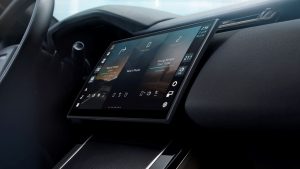
What we like
- Wow factor
- Strong performance
- That centre console
- Comfortable seats
- Biggish boot
What we don’t like
- Price
- Twitchy ride
- Awkward start button location
- Limited rear legroom
- Lacks low range
- Trip computer lags
- Jerky throttle and brakes
- Thirsty
What over-50 drivers need to know
You could live happily ever after in this car.
That is if you have a spare $150,000 to spend.
Is it worth $150K? Some people think so. Only you can be the judge.
In terms of size, Velar is bigger than an Evoque but smaller than the Sport.
But, without the benefit of low range all-wheel drive, it will have limited off-road ability.
Sand, dirt roads and muddy farm driveways won’t be a problem. Then again, we can’t imagine too many people taking this car off road anyway. Velar is all about status and luxury.
The other thing worth considering is that just about everything is controlled from one of two touchscreens, so unless you’re into technology, you’re probably not going to like it much.
seniordriver comments
The Velar name actually has a little history. When Land Rover developed the original Range Rover in the late 60s, they were keen not to reveal the model’s identity. They called it the Velar, derived from the Latin word “velare”, meaning to cover or hide. And you thought learning Latin was a waste of time!
The Velar has been cunningly sized to slot right between the Evoque and Range Rover sport, and priced to neatly fill the rather large price gap.
Like the F-Pace we reviewed recently, the Range Rover Velar as a five-star ANCAP safety rating, but it was tested in 2017 so that rating is about to expire.
Serious off-roaders will immediately exclude the Velar from their deliberations because of its lack of low-range gearing.
As with all Range Rovers, the Velar is beautifully fitted out and finished, as befits its lofty price. Head-up display and 360-degree camera really should be standard at this price point (if we’re being honest, so should many other features that will cost you extra).
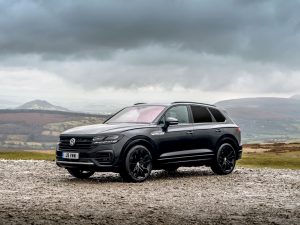
Buyers will want to consider the usual luxury SUV suspects: the BMW X5, Audi Q7 or Q8 and Mercedes-Benz GLE. We’d also suggest you include the Volkswagen Touareg – even though it’s a diesel. The tasty R-Line looks like a bargain at $117,540.
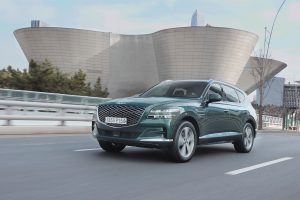
And one more to consider: the Genesis GV80. It’s a little thirsty in 3.5-litre petrol form (11.7L/100km combined) but you’ll be able to afford a lot of premium unleaded with what you’ll save. It’s even sharper value with a price starting at $109,700 (and a lot of what’s optional on the Range Rover is standard on the Genesis).
